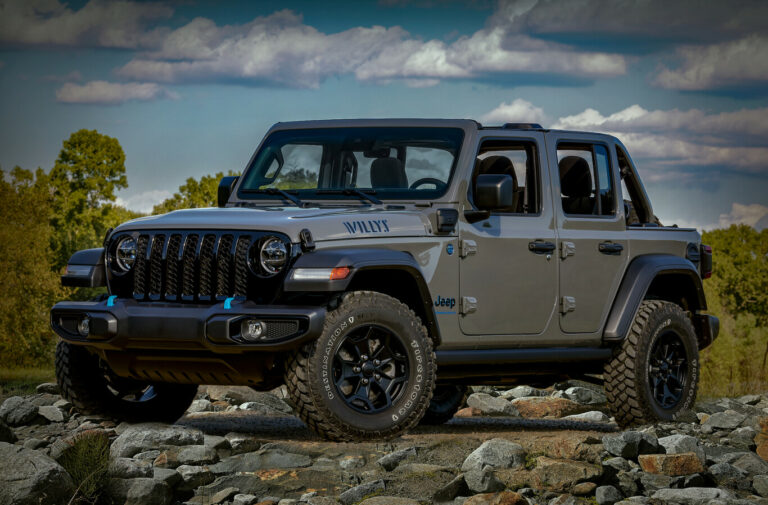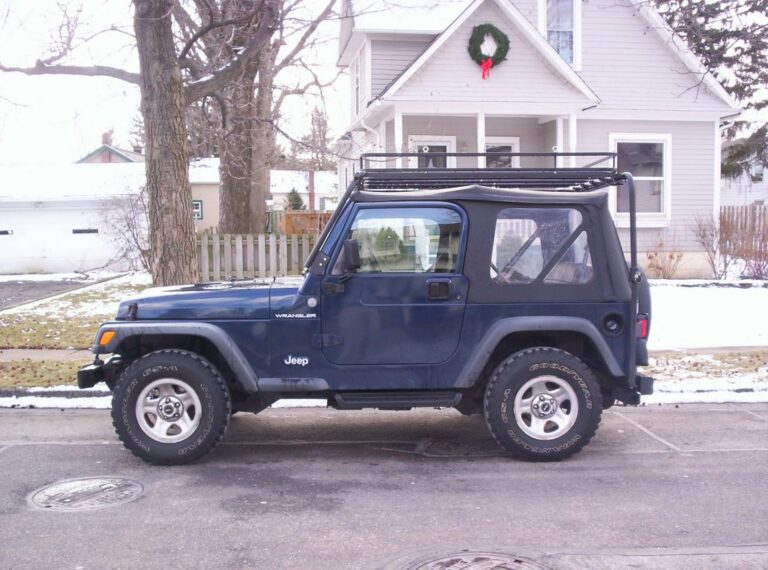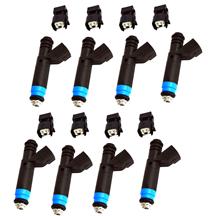Jeep Cherokee 4.0 Turbo Kit: Unleashing the Beast Within
Jeep Cherokee 4.0 Turbo Kit: Unleashing the Beast Within jeeps.truckstrend.com
The Jeep Cherokee XJ, with its legendary 4.0-liter inline-six engine, stands as an icon of rugged simplicity and off-road prowess. Renowned for its bulletproof reliability and ample low-end torque, the 4.0L has served countless enthusiasts faithfully for decades. However, even the most beloved engines have their limits, and for many, the stock 190 horsepower of the High Output (HO) variant simply isn’t enough. Enter the Jeep Cherokee 4.0 Turbo Kit – a game-changing upgrade designed to transform your workhorse into a fire-breathing powerhouse, ready to tackle any challenge with a newfound surge of acceleration and capability.
A turbo kit for the 4.0L Cherokee introduces forced induction, compressing air before it enters the engine. This allows more oxygen to be mixed with fuel, resulting in a significantly more potent combustion event and, consequently, a dramatic increase in horsepower and torque. Far from being a mere bolt-on modification, a turbo kit is a sophisticated system that requires careful planning, precise installation, and expert tuning to unlock its full potential safely and reliably. This comprehensive guide will delve into every aspect of turbocharging your 4.0L Cherokee, from understanding its components to navigating the installation and ensuring long-term performance.
Jeep Cherokee 4.0 Turbo Kit: Unleashing the Beast Within
The Allure of Forced Induction: Why Turbocharge Your 4.0L?
The decision to turbocharge a Jeep Cherokee 4.0L often stems from a desire for more. More power for highway merging, more torque for crawling over challenging obstacles, or simply more exhilaration from behind the wheel. The benefits are compelling:
- Dramatic Power & Torque Gains: This is the primary motivator. Depending on boost levels and supporting modifications, a turbocharged 4.0L can easily see horsepower figures jump from 190 HP to well over 300-400 HP, with corresponding torque increases that redefine the vehicle’s capabilities.
- Improved High-Altitude Performance: Naturally aspirated engines suffer significant power loss at higher elevations due to thinner air. Forced induction compensates for this, maintaining power output regardless of altitude.
- Enhanced Drivability: The increased powerband and responsiveness make daily driving more enjoyable, especially when towing or carrying heavy loads.
- Retain the 4.0L’s Character: Unlike an engine swap, turbocharging keeps the beloved 4.0L inline-six, preserving its unique sound and robust nature while significantly enhancing its performance envelope.
- Cost-Effectiveness (Compared to Swaps): While not cheap, a turbo kit can often be a more cost-effective solution than a full engine swap (e.g., V8 conversion), especially if your existing 4.0L is in good health.

While superchargers also offer forced induction, turbos typically provide greater peak horsepower potential and efficiency by utilizing exhaust gases to spin the turbine. Superchargers, being belt-driven, offer instant boost but consume some engine power to operate. For the 4.0L, turbo kits tend to be the more popular and performance-oriented choice.
Understanding the Core Components of a Turbo Kit
A complete turbo kit for the Jeep Cherokee 4.0L is a carefully engineered system. Understanding each component is crucial:
- Turbocharger: The heart of the system. Chosen based on desired power output, spool characteristics (how quickly it builds boost), and engine displacement. Key factors include compressor and turbine wheel sizes, and the A/R (Area/Radius) ratio of the turbine housing.
- Turbo Manifold: Replaces the stock exhaust manifold. This specialized manifold directs exhaust gases to the turbo’s turbine housing. It must be robust enough to withstand extreme heat and vibration. Cast iron or thick-walled tubular stainless steel are common materials.
- Intercooler: Essential for a reliable turbocharged engine. As air is compressed by the turbo, it heats up significantly. The intercooler cools this compressed air before it enters the engine, increasing its density and preventing pre-ignition (knock). Air-to-air intercoolers are most common, though air-to-water systems offer superior cooling but are more complex.
- Downpipe & Exhaust System: The downpipe connects the turbo’s exhaust outlet to the rest of the exhaust system. Both the downpipe and the remainder of the exhaust should be larger diameter (typically 3-inch or more) to reduce backpressure and maximize flow.
- Fuel System Upgrades: More air requires more fuel. This means:

- Larger Fuel Injectors: To deliver the increased fuel volume.
- High-Flow Fuel Pump: To maintain adequate fuel pressure.
- Adjustable Fuel Pressure Regulator (AFPR): To fine-tune fuel delivery.
- Engine Management System (EMS) / Tuning Solution: This is arguably the most critical component. The stock ECU cannot properly manage a turbocharged engine. Options include:
- Reflashed Stock ECU: A custom tune loaded onto the existing computer.
- Piggyback System: Modifies signals between sensors and the stock ECU.
- Standalone ECU: Replaces the stock ECU entirely, offering complete control over all engine parameters. This provides the most tuning flexibility and safety.
- Oil Feed & Drain Lines: The turbocharger’s bearings are lubricated and cooled by engine oil. A dedicated oil feed line delivers clean oil from the engine, and a gravity-fed drain line returns it to the oil pan.
- Wastegate: Controls boost pressure by diverting some exhaust gases around the turbine, preventing over-boosting. Can be internal (within the turbo housing) or external (separate unit).
- Blow-Off Valve (BOV): Vents excess pressure from the charge pipes when the throttle closes, protecting the turbo from compressor surge and prolonging its lifespan.

Choosing the Right Turbo Kit: Key Considerations
Selecting the right turbo kit isn’t a one-size-fits-all decision. Your specific goals, budget, and the health of your 4.0L will dictate the best choice.
- Define Your Goals:
- Mild Boost (5-7 PSI): Ideal for a stock, healthy 4.0L. Offers significant gains without requiring extensive internal engine modifications. Great for improved daily driving, towing, and mild off-roading.
- Moderate Boost (8-12 PSI): Pushes the limits of stock internals. May require upgraded head studs and a very conservative tune. Not recommended for sustained high-load use without internal upgrades.
- High Boost (12+ PSI): Absolutely requires forged pistons, connecting rods, potentially a stronger crankshaft, and a fully built engine. This is for dedicated performance builds.
- Budget: Turbo kits range from a few thousand dollars for basic components to over $10,000 for comprehensive, high-quality systems. Remember to factor in installation costs, tuning, and crucial supporting modifications.
- Engine Health: A turbocharger amplifies any existing engine weaknesses. Before considering forced induction, ensure your 4.0L is in excellent condition: good compression, no oil leaks, healthy cooling system, and proper maintenance history. A tired engine will not withstand the added stress.
- Reliability vs. Power: There’s a direct correlation. Higher power almost always means a compromise in long-term reliability unless significant internal engine upgrades are performed.
- DIY vs. Professional Installation: While some components are bolt-on, the complexity of plumbing oil lines, wiring sensors, and especially tuning, often necessitates professional installation. Improper installation can lead to catastrophic engine failure.
- Emissions Compliance: Be aware of local emissions regulations. Many aftermarket turbo kits are not CARB (California Air Resources Board) legal and may not pass inspection in certain states.
The Installation Process: A High-Level Overview
Installing a turbo kit is a significant undertaking that should not be rushed. While a full step-by-step guide is beyond the scope of this article, here’s an overview of the general process:
- Preparation: Thoroughly inspect the engine, perform any necessary maintenance (tune-up, fluid changes). Disconnect the battery.
- Disassembly: Remove the stock exhaust manifold, intake manifold (often), airbox, and other components to make room for the new system.
- Mounting: Install the new turbo manifold, turbocharger, intercooler, and associated piping (charge pipes). This often involves custom fabrication or modification of existing structures.
- Plumbing: Connect oil feed and drain lines to the turbo and engine. If the turbo is water-cooled, connect coolant lines.
- Fuel System: Install larger injectors, a higher-flow fuel pump, and any necessary fuel pressure regulators.
- Wiring & Sensors: Install new sensors (e.g., MAP sensor for boost, wideband O2 sensor for tuning) and connect them to the engine management system.
- Exhaust: Install the downpipe and connect it to the rest of the exhaust system.
- Tuning: This is the most critical phase. The vehicle must be custom-tuned on a dynamometer by an experienced tuner. This involves adjusting fuel delivery, ignition timing, and boost control to ensure optimal performance and engine safety. Do not run a turbocharged engine without a proper custom tune.
- First Start & Break-in: Carefully start the engine, check for leaks, and monitor all parameters. Follow the tuner’s recommendations for a proper break-in period.
Supporting Modifications and Potential Challenges
Adding significant power to your Cherokee will inevitably expose the weak links in other areas. Factor these into your budget and planning:
- Drivetrain Upgrades: The AW4 automatic transmission, while robust, has limits. For higher power levels, a transmission cooler is mandatory, and a rebuild with stronger components (clutch packs, torque converter) may be necessary. Axles, driveshafts, and differentials may also require upgrades, especially if you’re engaging in aggressive off-roading.
- Cooling System: Increased power generates more heat. A heavy-duty radiator, upgraded electric fan, and potentially an auxiliary transmission cooler are highly recommended.
- Brakes: More power means you need more stopping power. Upgraded brake pads, rotors, and potentially larger calipers are wise investments.
- Engine Internals (for High Boost): For boost levels beyond 7-8 PSI, consider forged pistons and connecting rods to prevent bending and cracking under extreme cylinder pressures. Upgraded head studs are also crucial to prevent head lift.
- Heat Management: Under-hood temperatures will increase. Consider heat wrapping the exhaust manifold and downpipe, and potentially adding hood vents.
- Noise, Vibration, Harshness (NVH): Expect a louder exhaust note, the distinct "whoosh" of the turbo spooling, and the "psshh" of the blow-off valve. These are part of the turbo experience, but some may find them intrusive.
- Maintenance: A turbocharged engine requires more vigilant maintenance. More frequent oil changes with high-quality synthetic oil are a must, along with regular checks of boost hoses, clamps, and fluid levels.
Practical Advice and Actionable Insights
- Start with a Healthy Foundation: Do not attempt to turbocharge a worn-out or poorly maintained 4.0L. Address all existing issues first.
- Budget Beyond the Kit: Always factor in the cost of professional tuning, supporting modifications (drivetrain, cooling, brakes), and potential unforeseen issues.
- Don’t Skimp on Tuning: A cheap tune is a recipe for disaster. Invest in a reputable tuner with experience in forced induction and the specific engine platform.
- Research Reputable Brands: Stick with established manufacturers of turbo kits and components. Read reviews and seek advice from others who have gone through the process.
- Consider Your Use Case: If your Cherokee is a dedicated rock crawler where low-speed torque is king, a turbo might be overkill, or a supercharger might be a better fit for instant grunt. For desert running, towing, or spirited street driving, a turbo excels.
Price Table: Estimated Costs for Jeep Cherokee 4.0 Turbo Kit Components
Prices for turbo kits and associated components can vary wildly based on brand, quality, completeness of the kit, and specific features. The following table provides estimated ranges to help you budget. These do not include labor unless specified.
| Component/Kit Type | Description | Estimated Price Range (USD) |
|---|---|---|
| Basic Turbo Kit (DIY) | Turbocharger, manifold, downpipe, oil lines. Requires separate purchase of intercooler, fuel system, and EMS. | $1,800 – $3,500 |
| Complete "Bolt-On" Turbo Kit | Includes turbo, manifold, intercooler, charge pipes, some fuel system components (e.g., injectors), basic tuning solution (e.g., pre-flashed ECU or piggyback). Designed for easier installation. | $4,000 – $7,000 |
| Premium/High-End Turbo Kit | High-quality turbo (Garrett, BorgWarner), robust manifold, efficient intercooler, comprehensive fuel system, often with a standalone ECU or advanced tuning solution. Built for maximum performance and reliability. | $7,500 – $12,000+ |
| Intercooler Kit (Standalone) | If not included in a basic kit. Intercooler, piping, mounting hardware. | $400 – $1,000 |
| Fuel System Upgrade | Larger injectors, high-flow fuel pump, fuel pressure regulator. | $300 – $800 |
| Standalone Engine Management | ECU (e.g., Haltech, MegaSquirt), wiring harness, sensors. Offers ultimate tuning control. | $1,000 – $3,000+ |
| Wideband O2 Sensor Kit | Essential for accurate tuning and monitoring. | $150 – $300 |
| Custom Dyno Tuning (Labor) | Critical for safety and performance. Varies by tuner experience and location. | $500 – $1,500+ |
| Professional Installation (Labor) | Highly variable, depending on complexity of kit and shop rates. | $1,000 – $3,000+ |
| Supporting Drivetrain Mods | Transmission rebuild/upgrade, stronger axles, driveshafts. (Optional, but recommended for high boost/hard use) | $1,500 – $5,000+ |
| Cooling System Upgrade | Heavy-duty radiator, electric fan. | $300 – $800 |
| Brake Upgrade | Larger rotors, better pads, calipers. | $400 – $1,500+ |
Note: These prices are estimates only and do not account for shipping, taxes, or unexpected issues during installation.
Frequently Asked Questions (FAQ)
Q1: Can a stock Jeep Cherokee 4.0L engine handle a turbo?
A1: Yes, a stock 4.0L in good condition can handle low boost (typically 5-7 PSI) reliably with a proper tune. Beyond that, internal engine upgrades (forged pistons, rods, head studs) are highly recommended for longevity.
Q2: How much power can I expect from a turbocharged 4.0L?
A2: On low boost (5-7 PSI) with a stock engine, you can expect around 250-300 horsepower at the wheels. With a built engine and higher boost, figures of 400+ horsepower are achievable.
Q3: Will turbocharging affect the reliability of my 4.0L?
A3: If done correctly with a proper tune, quality components, and vigilant maintenance, reliability can be maintained. However, forcing more power through an engine inherently increases stress. Poor tuning or cutting corners will drastically reduce reliability.
Q4: Does a turbo kit improve fuel economy?
A4: Generally, no. While a turbocharger can theoretically improve efficiency at light throttle cruising, the primary reason for installing one is increased power. When you’re using that power, fuel economy will significantly decrease.
Q5: Is a turbocharged Jeep Cherokee street legal?
A5: This varies widely by state and country. Many aftermarket turbo kits are not CARB (California Air Resources Board) legal, which means they may not pass emissions testing in states with strict regulations. Always check your local laws before purchasing.
Q6: What’s the main difference between a turbocharger and a supercharger for the 4.0L?
A6: Turbos are exhaust-driven, providing excellent peak power and efficiency, but may have a slight lag (turbo lag) before full boost. Superchargers are belt-driven, providing instant boost from idle, but consume some engine power to operate and typically have lower peak power potential than turbos.
Q7: How much does professional installation and tuning cost?
A7: Installation can range from $1,000 to $3,000+, depending on the shop and complexity. Custom dyno tuning typically costs between $500 and $1,500 or more, depending on the tuner’s experience and the engine management system.
Conclusion
Transforming your Jeep Cherokee 4.0L with a turbo kit is an ambitious but incredibly rewarding endeavor. It takes an already capable vehicle and elevates its performance to an entirely new level, making it a true sleeper on the street and an even more formidable machine off-road. The iconic 4.0L, celebrated for its durability, proves to be an excellent candidate for forced induction, capable of handling significant power gains with the right approach.
However, this is not a project to be undertaken lightly. It demands careful research, a substantial budget for both the kit and essential supporting modifications, and most importantly, a commitment to professional tuning. By respecting the engineering involved and investing in quality components and expertise, you can unleash the beast within your Jeep Cherokee, enjoying years of exhilarating power and performance from your legendary inline-six. The roar of the turbo, the surge of power, and the sheer capability of your newly turbocharged XJ will undoubtedly reaffirm your love for this classic American icon.





